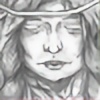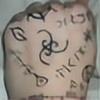HOME | DD
 Gambargin — Deirdriu of Treibheanna na Eireann (Irish)
by-nc-nd
Gambargin — Deirdriu of Treibheanna na Eireann (Irish)
by-nc-nd

#celts #femalewarrior #history #ireland #irish #middleages #norse #warriorwomen #womanwarrior #gaellic #gallowglas #gambargin #historicallywrongsketch
Published: 2014-12-08 09:23:54 +0000 UTC; Views: 19871; Favourites: 293; Downloads: 0
Redirect to original
Description
A concept drawing for the Irish (Actually, she's Norse-Gaellic) Woman Warrior in the Historically Wrong Sketch Series: Medieval Revisited , which is roughly based on the Middle ages covering 800 AD to 1400 AD. She represents the Historical Ireland in this series, and the name roughly translates (If my irish is correct) as Tribes of Ireland, a loose group of powerful Irish clans united under a single banner (Historically speaking, there was never a united Ireland in the middle ages)Inspired by the Music - The King of The Highlands by Antti Martikainen
Disclaimer: I am by no means expert in History, just a humble man with passion for learning history. Also, English is not my first language so if you do find any errors or would like to make a correction/feedback, please feel free let me know
INTRODUCTION
The fabled emerald Island of Hibernia, or Ireland as we say, has been home to the proud and brave Irish people since the dawn of history. It's culture is unique, its language distinct and its people, fascinating. Today, what is preserved of the Irish legacy is just a mere shell of what it was a millennia back. Ireland in the middle ages was home to the various powerful Irish clans, feuding with each other over control of the Island, as such, War was no stranger to these people. Foreign Invaders, like the Vikings, Normans and English learned it the hard way when facing them. Though the disunity between the Irish people led to their downfall and eventual absorption into the English throne, their spirits stood strong and relentless, for a free Irish man never bends his knee to anyone but death.
DRAWING COMMENTARIES
When I first started the Historically Wrong Sketch Series, I thought it would be enough to represent the Celtic People of the middle ages into one condensed faction, made of alliances between the Irish, Welsh, Scots and Bretons. However, after much reading and kind suggestions from fellow deviants like A-Chenery , BrowncoatMando and TheAstronomicon , it convinced me that each has their own distinct culture and legacy that in my opinion, shouldn't be left in silence.
In this drawing, Deirdriu Nic Domnhail de O'Lochlann is not an Irish native, but rather, a Norse-Gaellic as Initially, she is supposed to represent the Gallowglass that served as mercenaries in Ireland. Nevertheless, I'd still stick with the original background as it makes the drawing more flavorful. As you can see, she is depicted wearing mail hauberk, with (badly drawn) round shield, decorated belt as well as stylized Norse-Gaellic helmet of dubious historical accuracy. Her sword is based on contemporary Viking Sword, though the design of her one-handed axe is based on that used by the Picts. So overall, its a mixed and match of various equipments, which would be justified, since she is a mercenary. I've also included a poorly drawn Celtic Cross in the foreground just to add that "celtic"flavor to the overall drawing, though, this is more of artistic license on my part. The same goes with the banner displaying a celtic harp, this too, is an artistic license,
If Deirdru was to exist in real life, she would stood tall and imposing (please pardon the anatomical error). At 183cm height, She would be a giant amongst her brothers and sisters-in-arms, intimidating to both friends and foes alike. There's just something about her calm and focused look amidst the chaotic scene of battle and death. Perhaps, it could be because she was born in Violence and became used to it
REFERENCES AND OTHER RELATED MEDIA
Based on the previous drawing of
Given the nature of the Historically Wrong Sketch, the Irish will have plenty of enemies to fight with
The Anglo Saxons , The Normans , the Viking
A Part of the Historically Wrong Sketch Series: Medieval Revisited - You can find more on the various faction on the map here:
You can check out browncoatmando page where he has written a heroic story with some light side touch featuring Deirdriu and Gunnhildr - You can find the story here browncoatmando.deviantart.com/…
HISTORICAL COMMENTARIES
The History of Ireland is pretty distinct and has its own unique flavor in the celtic world, dating back as far as 8000 BCE. The origins of the first inhabitant of Ireland is somewhat still under the subject of numerous studies, though one of the established theory put forward the idea that Mesolithic hunter-gatherers arrived some time after 8000 BC. Another theory suggested that the inhabitants migrated from Britain during Ice age where Ireland and Britain was still connected by the so called "Ice Bridge". It was not until around 6000 BCE that the hunter-gatherer society adopted complex agriculture, a characteristic of High-Neolithic culture, with the evidence of pottery, tombs, farming field, stone tools as well as rectangular wooden houses.
What follows afterward is the adoption of metallurgy and complex societies that inhabitted the region. At first, Ireland came into Bronze Age at around 2000 BCE, followed by gradual development of more advance metalworking in the form or ornate jewelries, gold working, tools and weapons. At around 600 BCE, Iron gradually replaced the softer bronze metal and Ireland would soon enter the Iron Age. It was during this time that various ancient Irish Kingdoms, like that In Tuisceart, Airgialla, Ulaid, Mide, Laigin, Mumhain, Cóiced Ol nEchmacht began to emerge. Culturally and Linguistically speaking, the native Irish at this time spoke Goidelic languages, a branch of the Celtic Langauge, which is precursor to the Primitive Irish and ancestor to the modern Irish spoken today. The period also saw numerous cultural exchanges between the Celtic civilizations from Britain and Europe, either through trade or invasion, both of which as still under historical studies. Regardless, it is believed that the Celtic civilization had a strong influence on Ireland since late bronze age.
On the other hand, one of the earliest documented history or mention about Ireland came from one of the Greek Voyage under Pytheas of Massilia in 320 BCE, who called it as Ierne, while Ptolemy referred the island as Iouernía. As for the Romans, who conquered England during their Imperial reign, Ireland was called by Tacticus as Hibernia in late 1st century AD. Though the romans did made contact with the native Irish tribes, the extend of their influence and relationship remains unclear to this day.
During the time of Late roman empire in the 4th century, some of the Irish tribes, notably the Attacoti of South Leinster, had served as mercenaries in the Roman Army. It was thought that the returning mercenaries brought wealth, as well as the Christian Faith to the island, long before the arrival of St. Patirck in early 5th century. This was documented according to the Prosper of Aquitaine, a christian bishop by the name of Palladius was sent to Ireland in 431 as the first bishop of Irish christians, noting that there had already been Christians living in Ireland before the arrival of St. Patrick. From there on, numerous monasteries and christian missionaries began to spread the faith of Christianity to the majority of the Pagan population. It was a slow and gradual process, even up until early 6th century, the High Kings of Ireland were still practicing pagan rituals. However, in mid 6th century, under the leadership of Diarmait mac Cerbaill, Christianity was heavily adopted into the social life, with churches forming a central part of the communities. By late 7th century and beyond, Ireland was a nominally christian lands, with numerous active missionaries and monasteries attracting scholars and learned men to study in Ireland.
The period also saw the traditional account of Irish Lordships, such as the Ulaid (Ulster), the Connachta (Connacht), the Laigin (Leinster), Mumu (Munster) and Mide (Meath). According to Early Irish Annals, some of these independent power fought against each other for supremacy, but with the rise of the Uí Néill in the north and midlands and the Eóganachta in the south-west, most of these traditional divisions were reduced to smaller counties or tributary state. Ireland, by this time, was enjoying its golden age of cultural height and was prosperous.....until the arrival of the Vikings in the late 8th century.
The Vikings first appeared in Ireland when Norwegian Vikings raided the Island in 795, and for the next 2 centuries onwards, waves and waves of Viking Raiders came to Ireland to plunder its monasteries and towns throughout the Island. By mid 9th century, the Vikings established numerous settlements along the coast, such as Dubllin, which allowed them to further raid inland. This initially shifted the attention of the numerous Irish kings to lauch counter-attack against the viking, and was successfully repelled by early 11th century. Although the period was often recorded as one of the bloodiest part of Irish history, the settlements built by the Vikings continued to remain active and prosperous, while the Vikings and their descendants more often than not, served under several Irish Kings to fight in their petty disputes and territorial conflicts.
The disunity between the Independent Irish powers is what made Ireland an inhospitable place for foreigners, and the constant warfare made Irish warriors reputed for their bravery and ferocity. However, with the Norman conquest of England, and their arrival at waterford in 1171, the Norman war machine started their conquest of Hibernia to bring the Irish under the fold of English Monarchy. by the 14th century, the majority of Ireland was under the thumb of English Throne, but several insurgences and rebellions resulted in a short-lived but independent Irish states, only to be conquered again by the English in early 16th century, and would remain a part of the Monarchy till the war of Independence between 1912 -1922 that gave birth to a truly, Independent Irish power under the banner of Republic of Ireland.
Related content
Comments: 32

👍: 0 ⏩: 0

I love how dynamic this whole image is, it really feels alive! Amazing attention to detail, as always!
👍: 0 ⏩: 1

What a nice one. I can feel the irish style from this drawing
👍: 0 ⏩: 1

Wow, that is really tall for a mediaeval woman. I really like the composition of this drawing.
👍: 0 ⏩: 1

Indeed! She could be a model now (or a wrestler), but back then, Tall women were seen as kinda "monstrous"
👍: 0 ⏩: 1

Well, then I guess she has the right job.
Monstrous... ouch. ^^
👍: 0 ⏩: 0

Stuff like that always remembers me of Exordium, one of the coolest animated shorts I've ever seen. Very cool!
👍: 0 ⏩: 1

Ah yes, that reminds me. Exordium was a nice!
👍: 0 ⏩: 0

You are always welcome Gambargin
👍: 0 ⏩: 0

I like this Irish lady! The Norse/Germanic influence is clearly seen, but I'd be careful ordering "a pint o' Guinness" with this lady!! 
👍: 0 ⏩: 1

Hohoho, i'm sure she'd enjoy a round of drinks together, especially after a hard day of battle
👍: 0 ⏩: 1

Hehe yes, but only after the battle!
👍: 0 ⏩: 0

Nice! Wonderful attention to detail, especially in the belt fittings, the sword and the helmet.
(As for your Irish, I think it should be Treibheanna na hÉireann, or Treba (in)na (h)Érenn in late Old Irish/early Middle Irish)
👍: 0 ⏩: 1

Ah right! Thanks for correcting that, I really appreciate it
👍: 0 ⏩: 0

remove ostmen! remove viking! hibernia stronk! taranis is a ire!
👍: 0 ⏩: 1

LOL! Good comment sir, I applaud that
👍: 0 ⏩: 0


























